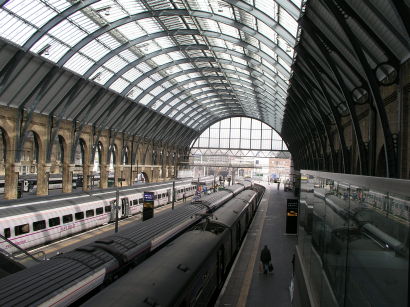NETWORK RAIL has warned that upgrading the London end of the East Coast Main Line as part of an alternative to HS2 could cause as much disruption as building the High Speed line itself.
Even then, a programme of work to improve network capacity could take 14 years, need 2,770 weekend possessions and disrupt main line services north from London Euston, St Pancras International and King’s Cross. The cost is also estimated at £20 billion – more than the base cost of Phase 1 of HS2.
The conclusions are set out in a joint report produced by Network Rail and Atkins.
The East Coast would take much of the burden of a network upgrade, because there are only limited opportunities to add capacity on the West Coast and Midland Main Lines.
One option at the southern end on the ECML is for a new double-track main line between Alexandra Palace and Biggleswade. A frequently discussed alternative of quadrupling the double-track pinch point which is posed by the Digswell viaduct in Welwyn Garden City and northwards from there through Welwyn North tunnel has not been developed, says Network Rail, because the mix of different types of services south of Hitchin is also a major constraint on route capacity.
However, it should be possible to increase speeds south of Doncaster from the present maximum of 125mph to 140mph, after the installation of ERTMS.
ERTMS is not planned for the West Coast or Midland lines until much later on, and so the maximum on these lines would remain at 125mph for the foreseeable future.
Network Rail is not encouraging about the effects of a major upgrade of the existing railway. It said: “Network Rail’s overall conclusion is that it is not possible to have an upgrade programme of such magnitude without it resulting in significant disruption to weekend rail travel on multiple routes over a lengthy period of time.
“These projects require complex planning and logistical organisation and normally only a few are carried out at any one time. There would also be a major requirement for buses and drivers for replacement services.”
Railnews Blog: the HS2 alternatives


